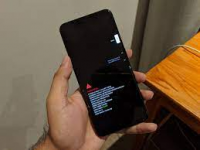Categories
Tags
Archives
How to boot an Android device into the fastboot mode
-
When working with ADB and fastboot, there may be times when the process requires you to boot your device into a special mode. Each device has different methods for entering this fastboot mode, but the general process is the same for all Android devices. It’s possible that you may need to reboot your device during any of these processes. JTWhatsApp If that happens, don’t worry! You can use this article as a reference to get your device back into fastboot mode. This guide provides step-by-step instructions on how to boot an Android device into fastboot mode. The process is different for each type of phone or tablet, so read carefully and follow the steps closely until you finish this process.
Booting an Android device into fastboot mode
To start with, let’s review what fastboot mode is and what it’s used for. Fastboot mode is a special type of “boot mode” that allows you to interact with your device using a computer. You can use this mode to flash a new operating system, modify certain settings, or troubleshoot problems with your device. Fastboot mode is built into every Android device, Nulls Royale and it’s accessible by pressing a specific key combination while your device is turned off. When your device boots into fastboot mode, it loads a minimal operating system that’s built for data transfer. This special OS doesn’t include most of the features and apps found on a normal Android device.
Boot an Android Device into Fastboot Mode (Android 6.0 and Above)
The first method applies to devices running Android 6.0 or later. Power off the device. Hold down the device’s volume down button and the power button at the same time until the device turns on and shows the boot loader or start up screen. If you’ve done it correctly, you’ll see “Start” or “Boot” written at the top of the screen. Let go of the buttons and let the device finish turning on. The device will load its normal operating system.
Boot an Android Device into Fastboot Mode (Android 5.0 and Below)
The second method applies to devices running Android 5.0 or earlier. Power off the device. Hold down the device’s volume down button and the power button at the same time until the device turns on and shows the boot loader or start up screen. If you’ve done it correctly, you’ll see “Start” or “Boot” written at the top of the screen. Let go of the buttons and let the device finish turning on. While the device boots, look for a “LOCKED” or “OKAY” prompt on the screen. If you see this prompt, use the volume buttons to select “OKAY” and press the power button to select it. Your device should now be in fastboot mode.
Booting an Android device into Recovery mode
The third method applies to devices running Android 6.0 or later. Power off the device. Hold down the device’s volume up button and the power button at the same time until the device turns on and shows the boot loader or start up screen. Let go of the buttons and let the device finish turning on. While the device boots, look for a “LOCKED” or “OKAY” prompt on the screen. If you see this prompt, use the volume buttons to select “OKAY” and press the power button to select it. Your device should now be in recovery mode.
Booting an Android device into Recovery mode (Marshmallow only)
The fourth method applies to devices running Android 6.0 or later. Power off the device. Hold down the device’s volume up button and the power button at the same time until the device turns on and shows the boot loader or start up screen. Let go of the buttons and let the device finish turning on. While the device boots, look for a “LOCKED” or “OKAY” prompt on the screen. If you see this prompt, use the volume buttons to select “OKAY” and press the power button to select it. Your device should now be in recovery mode.
Conclusion
This concludes our tutorial on how to boot an Android device into fastboot mode. We hope this guide helped you understand the basics of this mode, and we encourage you to read through our other articles in the Better understand section to learn more about the other modes! Keep in mind that while you are in fastboot mode, the process won’t be as smooth as normal operation. You won’t be able to use your device as intended, so you should only enter this mode when necessary. Once you’ve finished the process, be sure to shut down your device and restart it in normal mode.

